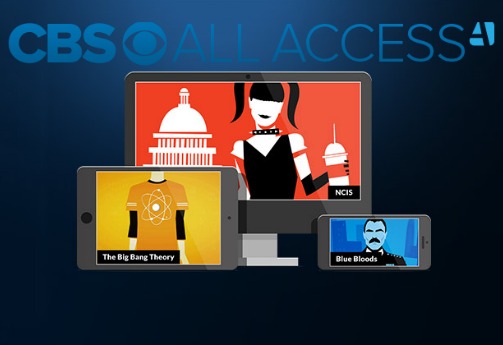Guest Blog: What CBS All Access Reveals About the Future of Television

Related: Guest Blog—How OTT Hides Television’s Revolution
A lot of internet portals have attracted more attention than CBS All Access. HBO Now even had its own grassroots movement with takemymoneyhbo.com. But CBS All Access remains one of the most fascinating steps toward the future of television.
Portals are services that distribute television using the internet—whether to your living room set, computer, or phone. Like channels and networks before them, portals select and organize television programs. Think Netflix, Hulu, and HBO Now, but also CuriosityStream, Warner Instant Archive, Acorn TV, and as the Wall Street Journal’s Shalini Ramachandran discovered, Zombie Go Boom, Trout TV, or Hungry Monk Yoga.
Where a channel’s task is to “schedule” though, portals curate. The launch of each new portal offers new lessons about the strategies of curation, which are quite different from scheduling. Though similar, these two sectors of the television business are building different products: Channels build a schedule, portals build a library.
Related: CBS Affiliates Like Success of 'All Access'
CBS All Access primarily has been promoted as a way to watch current CBS shows—either live or on demand. But CBS All Access’ most revealing clues about the future business of television have nothing to do with its current programming.
CBS All Access illustrates the opportunity of a “studio portal.” It exists to distribute content produced or owned by CBS Studios. Its guiding strategy is vertical integration. Rather than licensing its library of content to a portal such as Netflix, CBS seeks to profit directly from its intellectual property.
Another upside of self-distribution is data. Even portals that are entirely subscriber-funded—and thus not interested in demographics in the way advertiser-support requires—benefit tremendously from the data available from portal viewing. Being able to see what viewers first watch informs services about what drives subscription. Portals then gather insight into what viewers watch, how quickly, and what patterns of viewership correlate with cancelling the service. By launching its own portal, CBS is developing rich insight upon which to build strategies for this emerging sector of the television industry.
Related: Why Your Show May Be a Streaming No-Show
Just as the industry has developed elaborate scheduling strategies over the decades, so too will strategies of curation emerge. The business of curating a library is different than building a schedule. Schedules are all about time—when are programs “on.” The business built on licensing shows through different windows also imposes time on the business of television. Because they aren’t constrained to airing a single show at a time, portals don’t face the capacity issue that makes scheduling so difficult. Their libraries allow viewers to find content when it suits them and the most valuable libraries maintain their holdings.
One of the most effective ways to guarantee library consistency is for portals to own series—as in the studio portal strategy. Even Netflix, which established its foothold in the industry by licensing content from others, clearly recognizes the value of owning rather than borrowing intellectual property, and why else would an Amazon Studios exist. Other portals rely on their own intellectual property, but also acquire series to shape libraries to have particular value. NBCUniversal may own SeeSo, but including more than just NBCU-owned comedy increases the portal’s value proposition.
There is much to learn about the value propositions, approaches to curation, and business models of portals, and many varied, and perhaps counter-intuitive strategies are possible. The size of a library may not be a greater determiner of value than its specificity. The Noggin library need not be vast to be a must-have service for parents with preschoolers, and the WWE Network may have a small fraction of the hours of programming of Netflix, but so precisely service the desires of wrestling fans as to warrant a higher monthly fee.
Related: CBS Eyes More Originals for All-Access Service
The real value of services that offer a library may not yet be clear in 2016. It has been just in the last few years that the U.S. industry has produced and aired more television than most people can watch, even when using DVRs and VOD. It may seem unlikely today for viewers to use portals to commonly watch shows a few years old, but as this era of abundance—even surplus—of programming continues, viewers not only slip from the timeliness of weekly viewing, but from current year viewing as well. The value of portals is providing a library for viewers to go back to that show everyone was talking about, but they never got around to watching.
New portals have sprouted like spring flowers since the start of 2015. Ramachandran counted nearly 100 at the end of last year, 76 of which relied on subscriber funding. Rather than uniformly categorizing these services based on their internet delivery, it is time to examine their practices and strategies. Reliance on a subscriber-funded business model differentiates such portals from ad-supported, linear television as much as their internet distribution.
Channels and networks have decades of strategies built from the time-based norms of technologies only able to deliver a single program to a mass audience. But the television industry, media economists—pretty much no one—has thought much about the commercial strategies of libraries. While CBS All Access is certain to gather a lot of attention when the new Star Trek series debuts next year, the bold new lessons it offers on portal library strategies will be even more interesting than its plot.
Amanda Lotz (@DrTVLotz)is a professor at the University of Michigan and author of The Television Will Be Revolutionized, now in its second edition. Her current book project explores how cable transformed U.S. television just before the internet revolutionized it.
Broadcasting & Cable Newsletter
The smarter way to stay on top of broadcasting and cable industry. Sign up below
